About the Project
Group members Chaz Woodall, Amara Anderson, Daniel Keehn
The Project During Fall 2019, my group and I were tasked with designing a new experience to improve the lives of students on Georgia Tech’s campus. The catch? This experience needed to utilize voice as a key aspect.
We needed to design and prototype a Voice User Interface
...in a little under 2 months!

My Role
I controlled the ‘road map’ for the project, organized group meetings, led class presentations, and facilitated communication within my team. In addition, I made the art/sketches for the persona & storyboard.
After completing the group project for a class grade, I decided to re-design the SOUS app interface on my own based off feedback I recieved from the professor. This allowed me to practice my product design skills and accomplish goals that were not possible within the limited time frame of the group project. My updated interface designs:
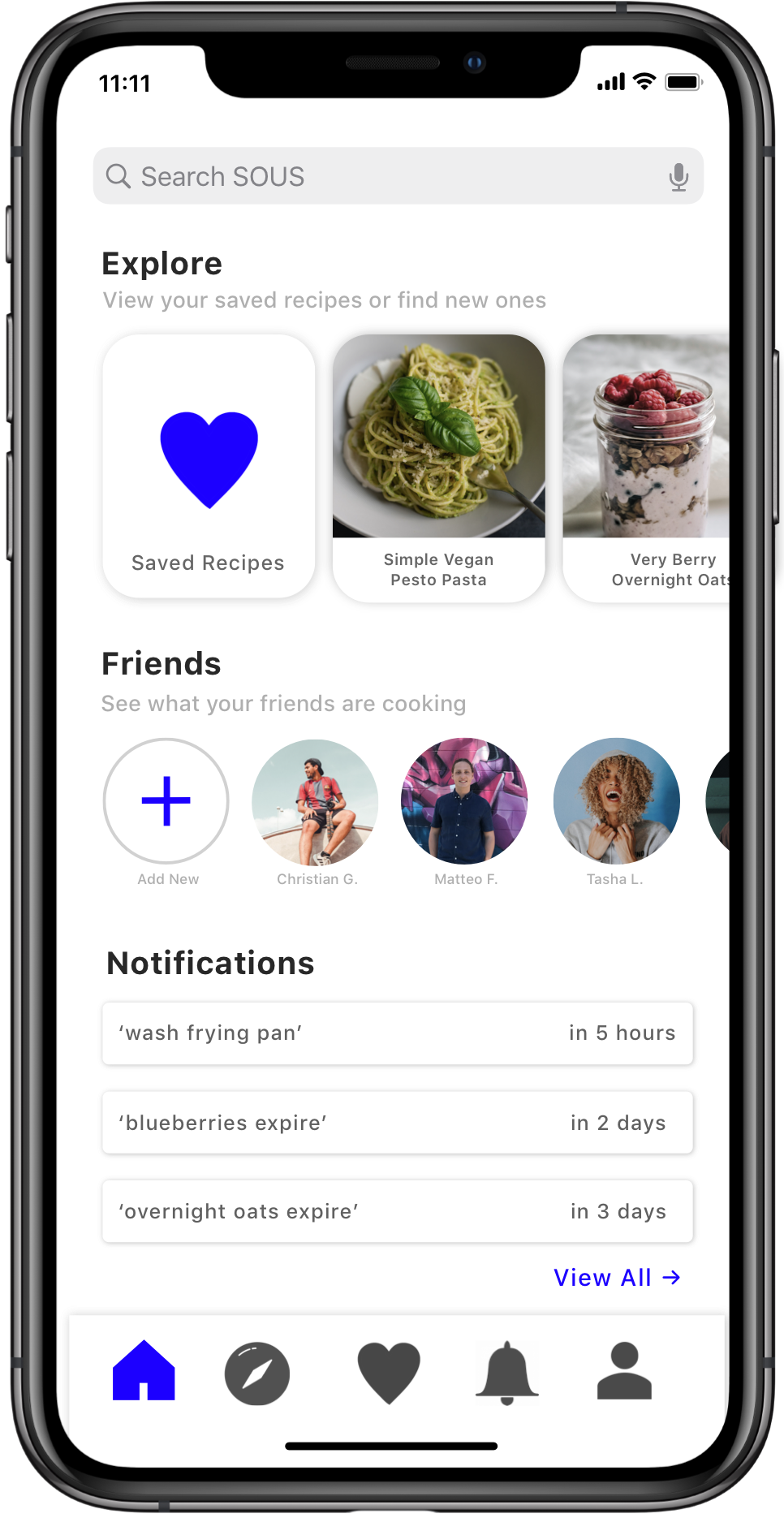
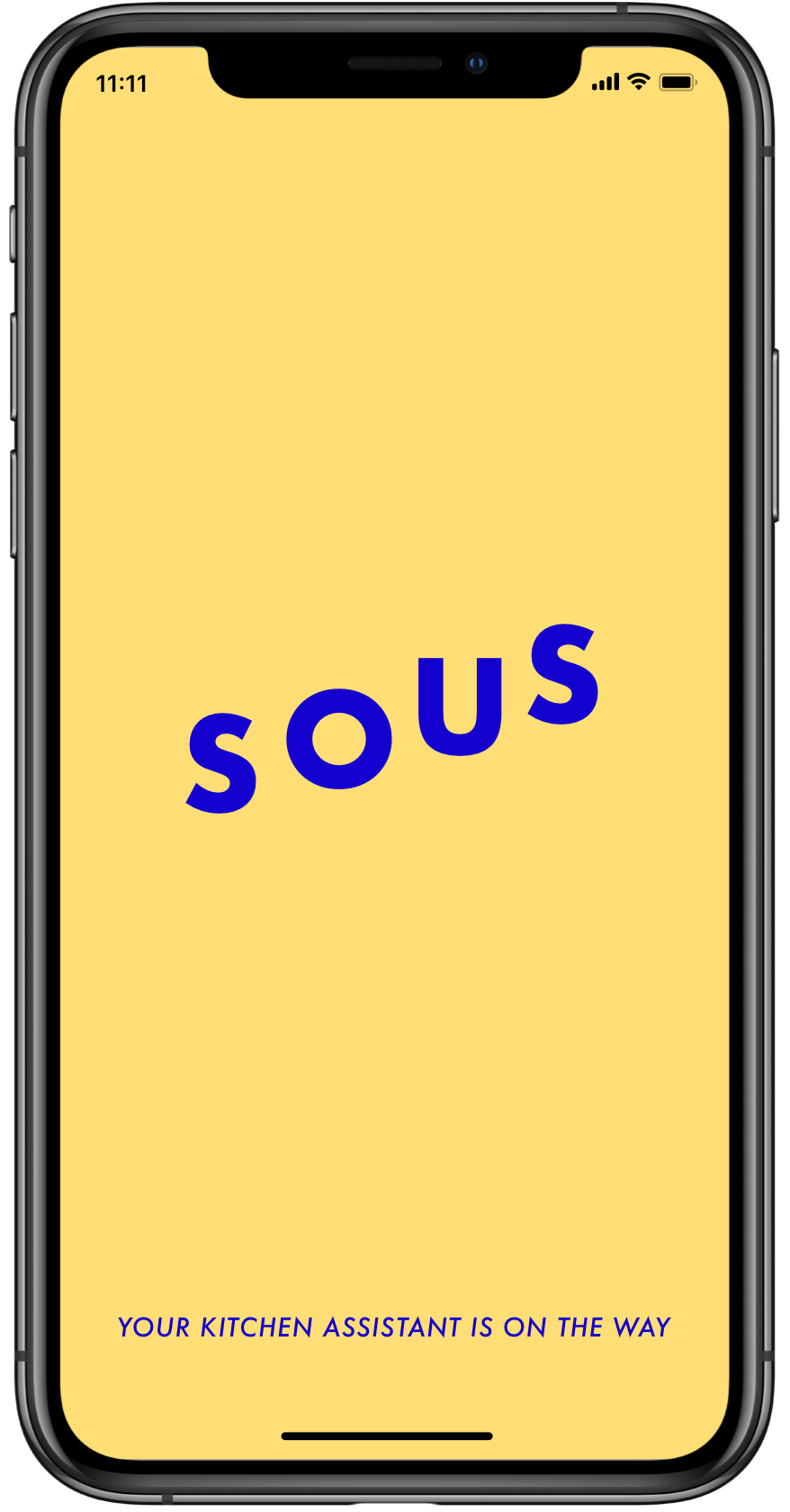
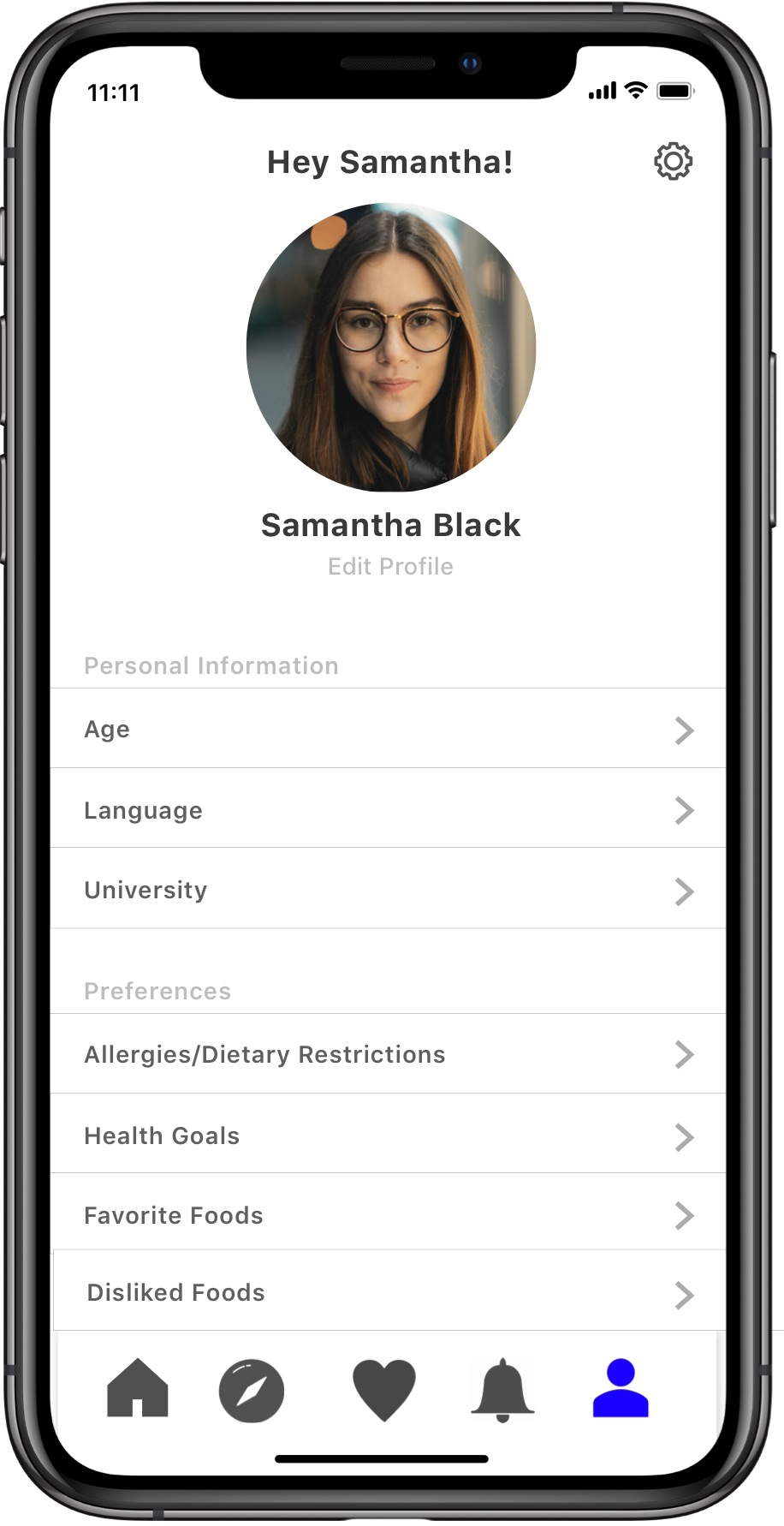
Our Process
⓵ Discovery ︎ ⓶ Design ︎ ⓷ Iteration ︎ ⓸ Synthesis
⓵ Discovery
The Problem
Many students move away to college without much knowledge about cooking and nutrition. Students struggle to make healthy food choices - much less learn to cook. RA’s lack the time to constantly guide and teach their students. This results in a lack of guidance and instruction about kitchen safety and nutrition.
How we figured this out...
Ideation
We started off with sticky notes sessions. We narrowed down our target users to first-year students and identified problems and annoyances these students face. Some of these problems include:
- Fire alarms going off regularly in student residence halls
- Struggling to adjust to busy school schedules and demanding classes
- Poor food choices at meal hall
- Struggling to navigate life away from family/home
Interviews
We interviewed first-year students living in residence halls, resident advisors (RAs), and hall directors.
What we found out: most students interviewed are not proficient cooking and kitchen related activities, messes and accidents in the dorm kitchens are very common, and RAs do not have enough time to guide students in kitchen activities. Also, the fire alarms are set off on an almost weekly basis due to improper kitchen use.
Ethnographic Research
We spent time in first-year dorm kitchens observing the students behaviors. Things we noticed:
- Students left many dishes and pans in the sink
- Students primarily used the microwave instead of the oven or stove
- Fridge/freezer was packed full of food
- Lots of expired food in fridge
- Students were not using/cooking very nutritious foods

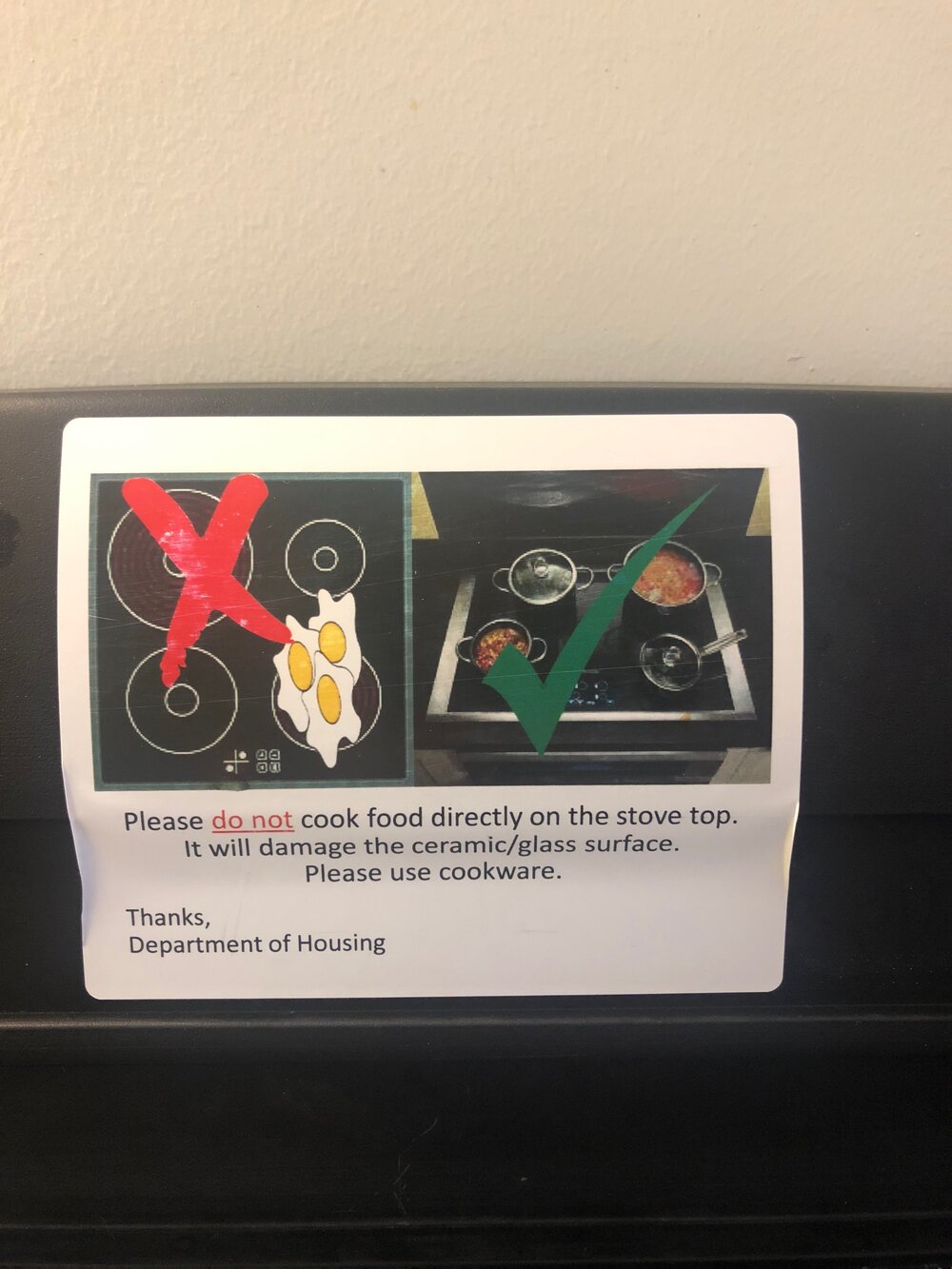
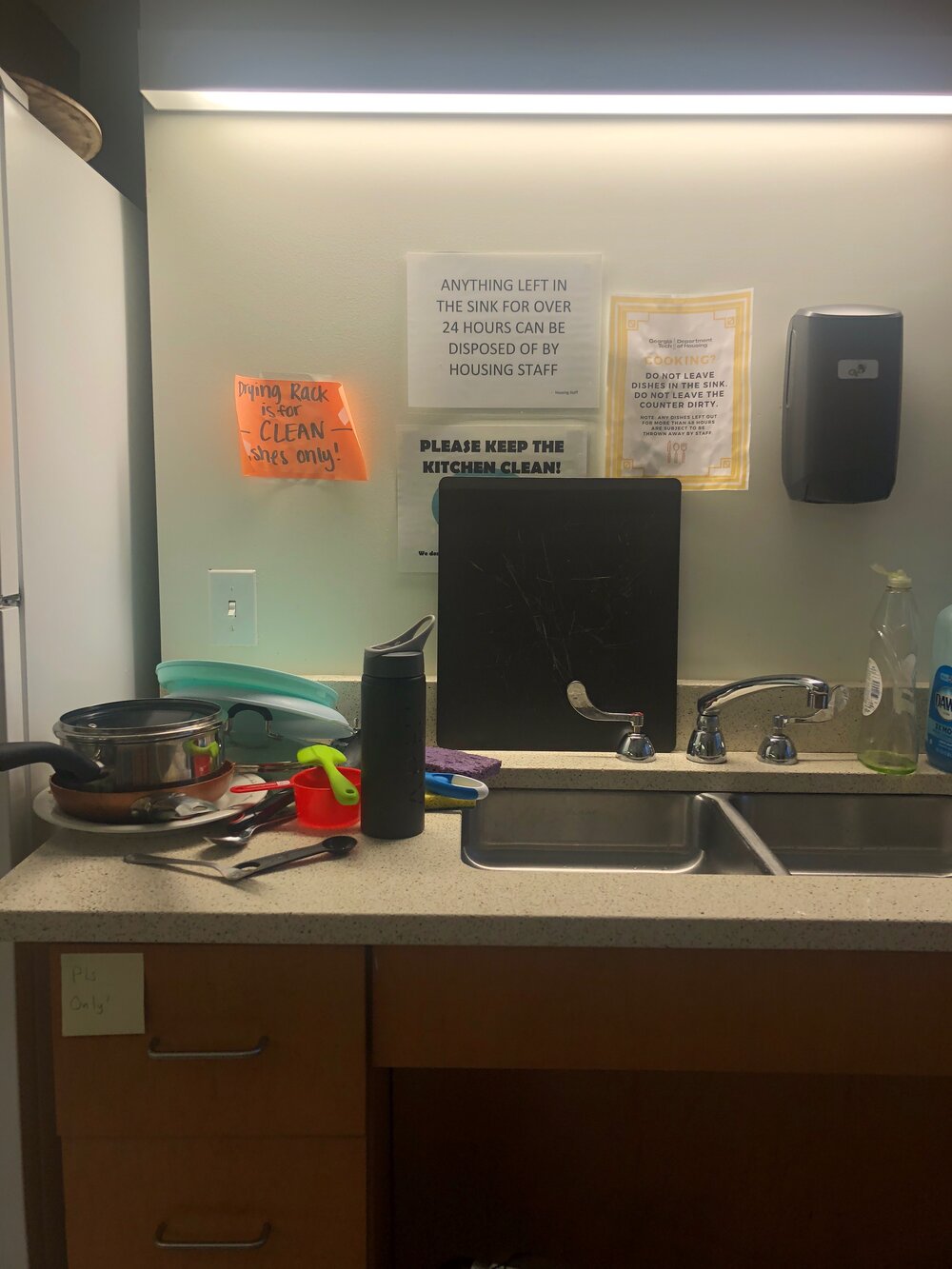
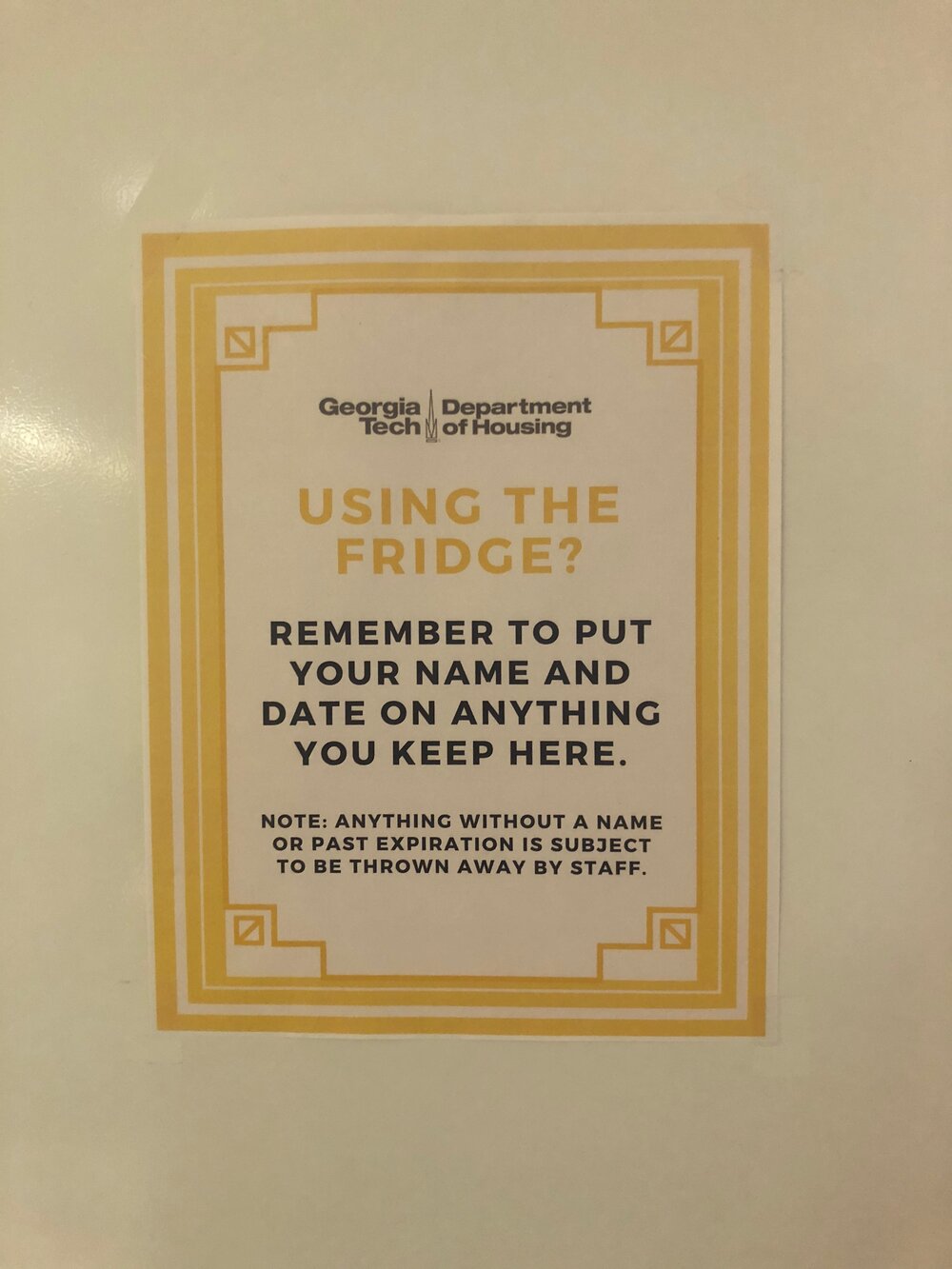
⓶ Design
An AI system that guides students in safely and effectively using their dorm kitchens & making healthy food choices. This hands-free voice experience will teach and guide first-year students in the kitchen, inform them on nutritional facts as well as promote safer kitchen habits.The “Experience” We Targeted
Guidance! More specifically guidance that…
- Has informative and clear instructions
- Is intuitive (by considering current VUIs on the market and how people interact with voice in everyday life)
- Engages users to encourage them to cook more often
Meet SOUS, our system persona. SOUS is a helpful, informative guide to the user.
Key Adjectives helpful, kind, informative, friendly, encouraging
Description The “sous chef” + assistant to the user. Guides user in cooking/kitchen responsibilities. Keeps user company while they use the kitchen. Informs user about kitchen safety and nutrition information. Helpful and friendly towards user.
Interacts Like... A customer service rep, a flight attendant, a TV chef (Brad from Bon Appetit)
Embodiment/Logo a cute doodle character with a chef hat
Iterations of SOUS embodiment ︎


User Persona
Using data about our participants collected via the interveiws and ethnographic research, we created personas to best represent and help us emphasize with our users

Storyboarding
It is Sunday and Samantha has a busy week of midterms coming up. She wants to find and learn how to meal-prep quick and nutritious breakfasts to eat before her 8am classes.
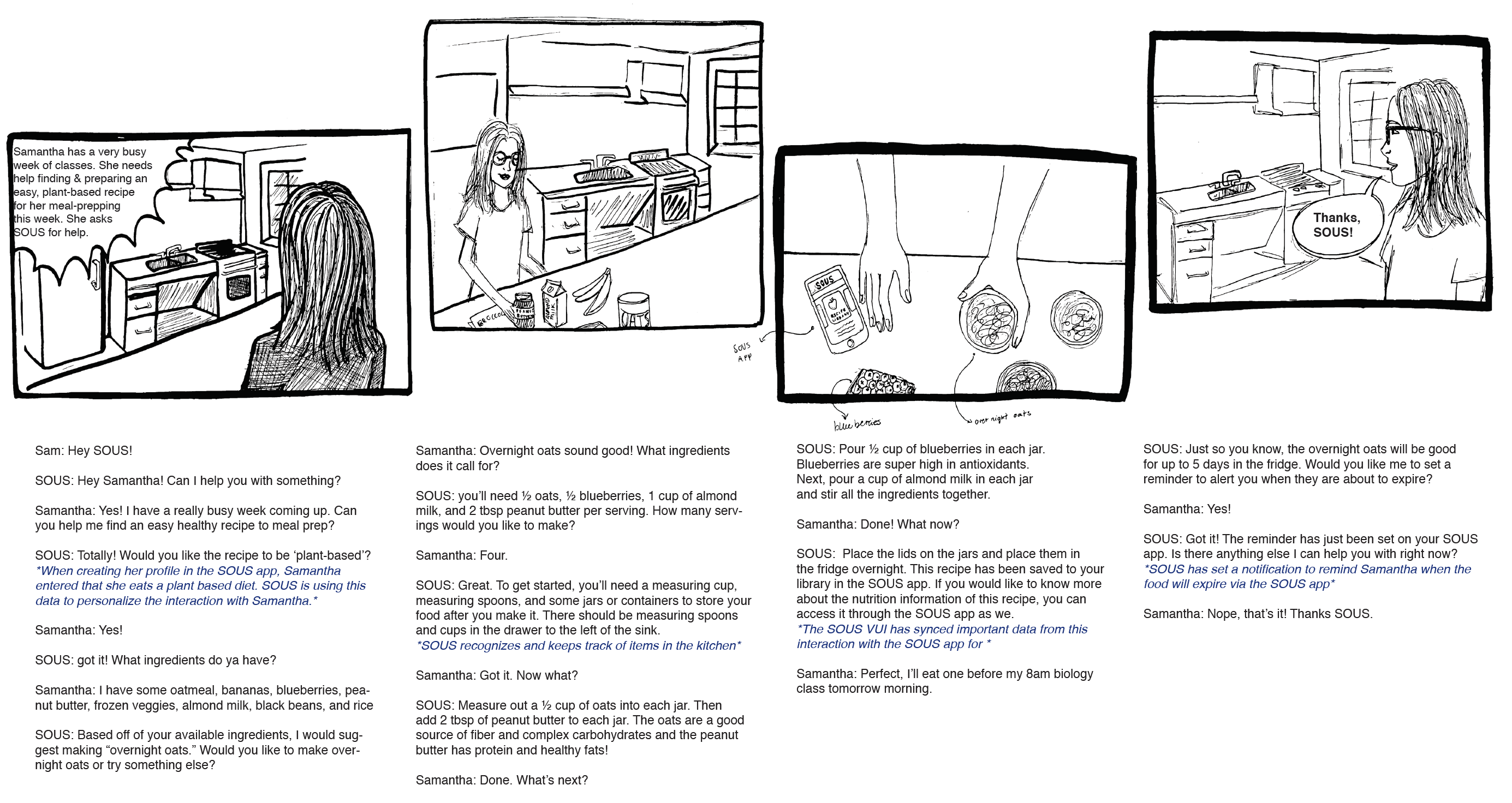
⓷ Iteration

User Dialogue Research & Prototyping
What do people say? We set out to better understand how our users preferred to interact with Voice User Interfaces through dialogue research.
Attitudinal (what they say, not what they do); Qualitative; De-contextualized context of use (not actually using the product)
Interview: think aloud method - audio recordings of how users would complete a task or prompt without guidance
Definition: In a thinking aloud test, you ask test participants to use the system while continuously thinking out loud — that is, simply verbalizing their thoughts as they move through the user interface. (Nielsen, 2012)
Participants: four native English-speaking, first year students living in residential halls
Results & Findings:
How Users Started a Command: “Hey, SOUS” was mainly used to start command
Command Comparison: Informal (Short) commands were more prominent than formal (Long) commands
Questions: Commands mostly used “Could you”, “Can you”, “What”, “Why”, “How”
Length: Many commands weren’t full sentences

Wizard of Oz Prototyping
WOZ Results: We completed 4 Wizard of OZ trials using English-speaking, GT student participants. Overall, initial trial went really well, despite a few unexpected hiccups. Provided good insight and uncovered flaws to be improved in future trials. Trails 2-4 addressed issues uncovered in trial 1 by implementing scripted phrases (to improve wizard response time) and including a more realistic set-up (in a student kitchen). Feedback from participants when then used to shape and inform changes in our high fidelity prototype.
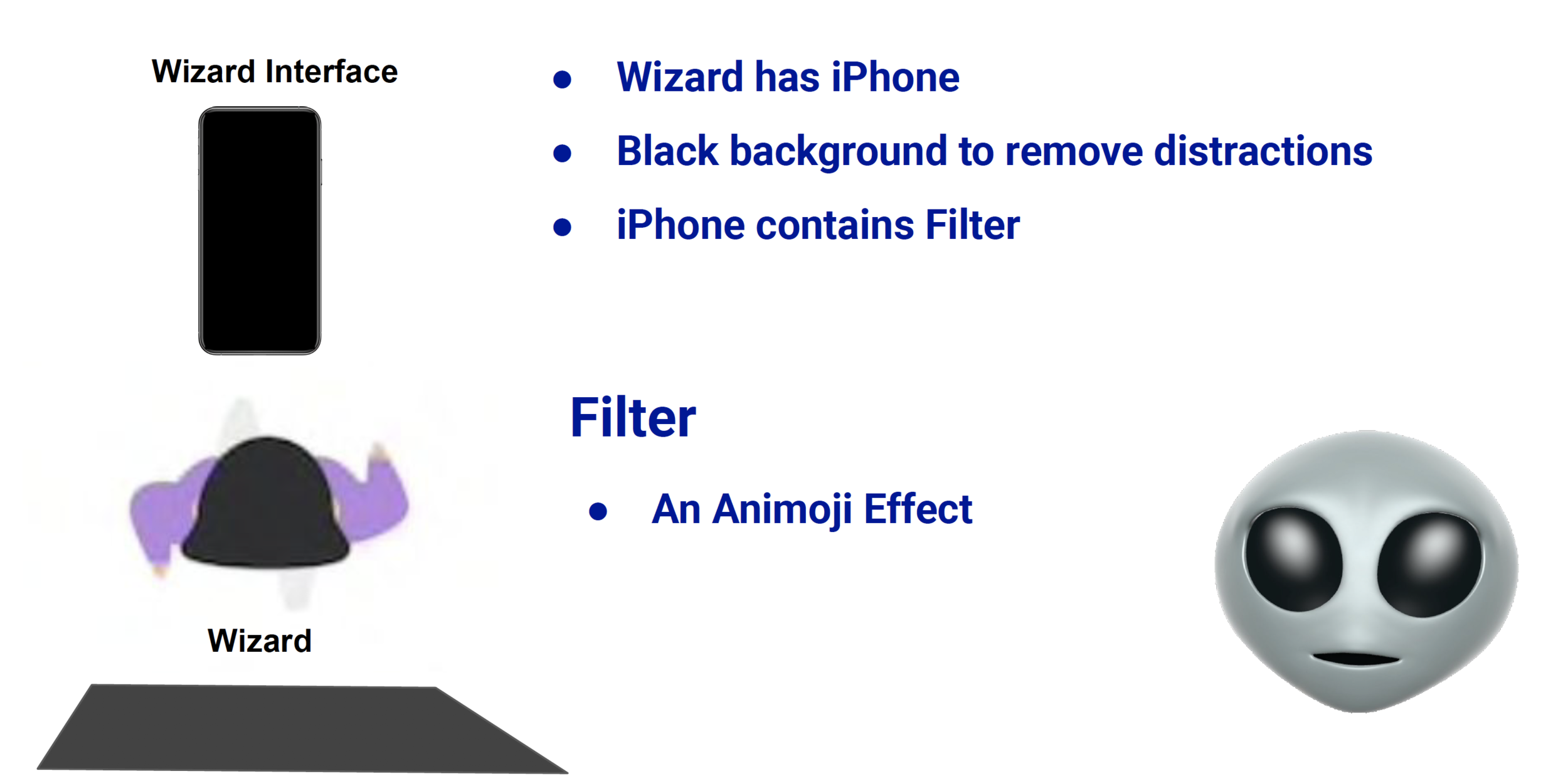
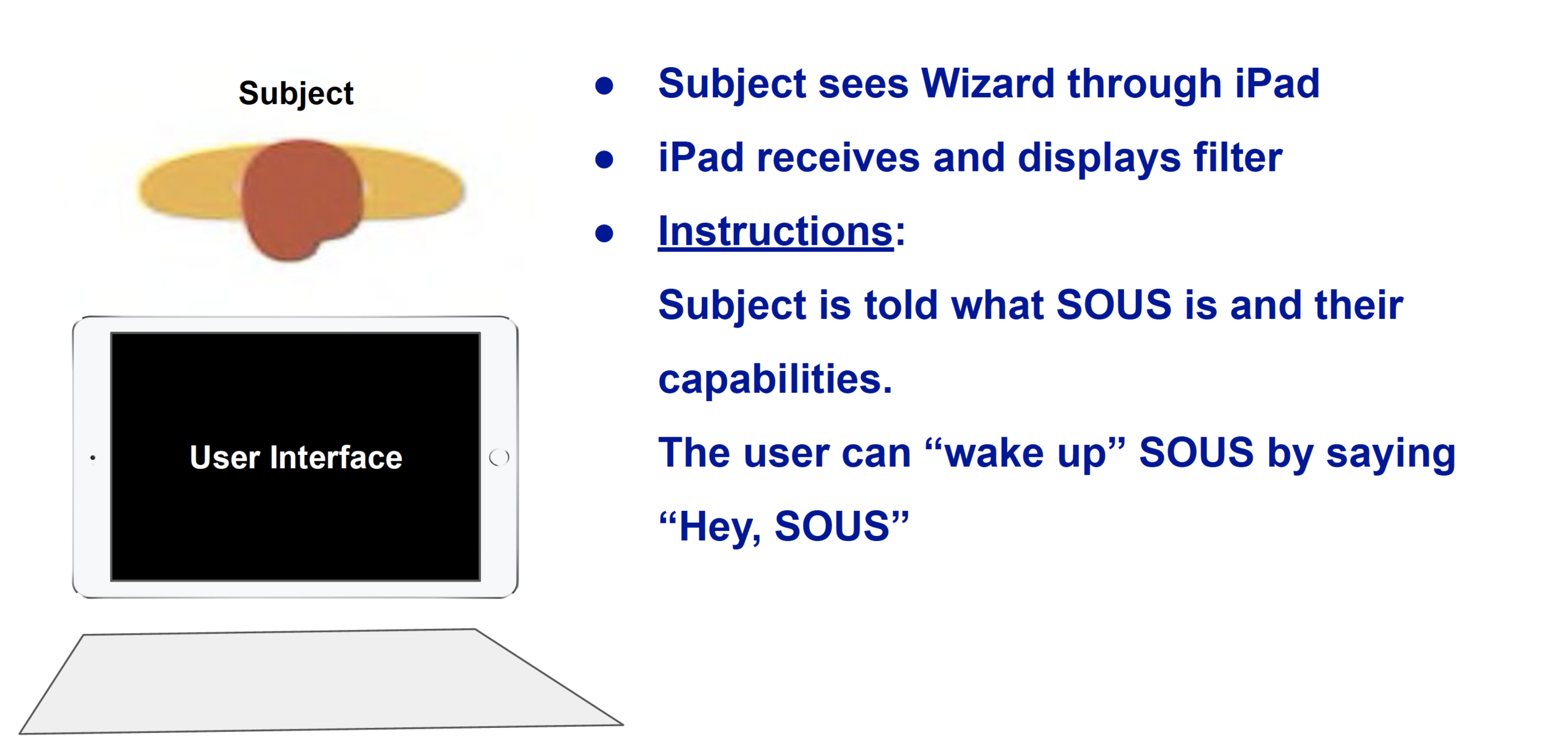
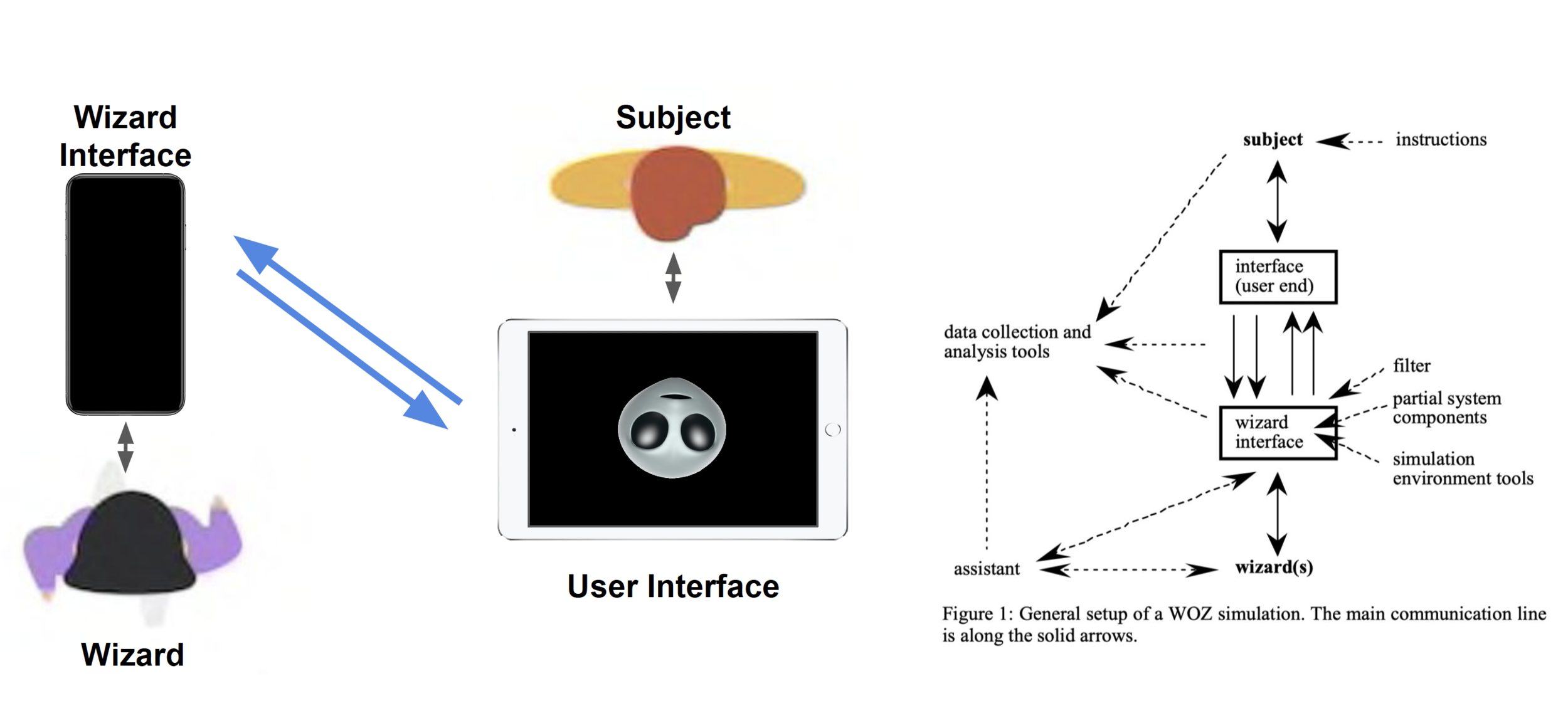


Mid-Fidelity App Wireframes
Used Sketch software to make wireframes of SOUS app to accompany SOUS VUI. Updates to this iteration include a social platform (users can add and connect with friends on the SOUS app to share recipes and tips) and recipe database (users can save written and video recipes they have made or would like to make at a later time).

⓸ Synthesis
Hi-Fidelity Prototype
SOUS (6” height, 7“ width)
Wall mounts included
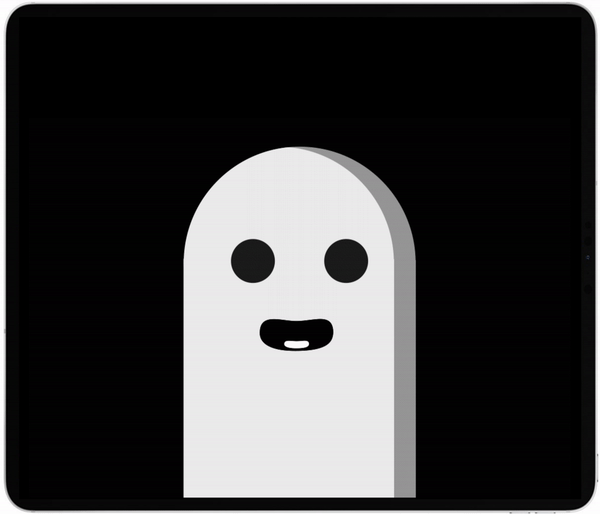
Technology
- Advanced Natural Language Processing & Voice Recognition
- Connects to SOUS API for SOUS responses
- Facial Recognition
- Uses Google API to generate recipe and question data
- Connects to SOUS database to store and retrieve user data
Specs
- written in Swift and Kotlin for iOS and Android devices
- Connects to the SOUS database to store user data
- Uses SOUS API to access SOUS responses and content
- Uses Machine Learning to predict and suggest meals a user will enjoy
Features
- Mobility: communicate with SOUS on-the-go
- History& Storage: access to previously stored recipes
- Personal: personalize SOUS with dietary restrictions
- Social: see what your friends are cooking with SOUS
My Individual Interface Designs
These wireframes explore the aesthetics, capabilities, and ideas my team and I were unable to address during the short time span of the project.
*This page will be updated as new designs are created; last updated: 6/30/20



Where do we go from here?
Challenges of Adoption
Overload Most of our testing and formation has centered around a 1 to 1 interaction, but we haven’t explored how SOUS handles multiple people in the room.
Limiting Scope SOUS is primarily designed as a kitchen assistant for dorms, yet how do we constrain users to not think of SOUS as different version of Siri, Alexa, etc. Can we limit them to asking only about food and dorm safety or will they ask about any and everything?
Liabilities How does SOUS respond to emergency situations that follows university policy? What is SOUS fails to give students the proper safety information and an accident occurs.
If you have questions regarding any specifics of this project, please contact me.